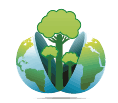 Ecosystem Management
Ecosystem Management
Introduction
Ecosystems management is an approach to natural resource management that focuses on sustaining ecosystems to meet both ecological and human needs in the future. Ecosystem management is adaptive to changing needs and new information. It promotes shared vision of a desired future by integrating social, environmental and economic perspectives to managing geographically defined natural ecological systems.
Ecosystems promote human well being through the various services they provide.
One of the six priorities of the UNEP medium-term strategy for 2010–2013 is that "countries utilize the ecosystem approach to enhance human well-being". The UNEP Ecosystem Management Programme is centred on the functioning and resilience of the ecosystems and the services they provide. The programme aims to support countries and regions to:
- increasingly integrate an ecosystem management approach into development and planning processes;
- acquire the capacity to use ecosystem management tools; and
- realign their environmental programmes and financing to tackle the degradation of selected priority ecosystem services.
Objective
To ensure that countries utilize the ecosystem approach to enhance human well-being.
The programme is guided by five major interlinked elements: human well-being, indirect and direct drivers of change, ecosystem functioning and ecosystem services. As ecosystem services are interlinked and cannot be treated in isolation, UNEP promotes a holistic perspective for dealing with bundles of interlinked services to reverse their decline through improved ecosystem functioning and increased resilience. The services fall under the following categories: regulating, provisioning, supporting and cultural services.
The UNEP programme focuses on 11 of the 15 degraded ecosystem services mainly comprising:
- Regulating services: Climate, water, natural hazard and disease regulation, water purification and waste treatment, which are often strongly affected by the overuse of provisioning services;
- Provisioning services: Freshwater, energy (especially the emerging issues around biofuel production) and capture fisheries;
- Cultural services: Recreation and ecotourism service;
- Supporting services: Nutrient cycling and primary production which underlie the delivery of all the other services but are not directly accessible to people.



